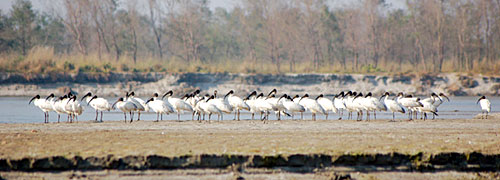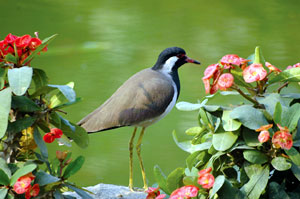 |
 |
Altitude variation in the Himalaya and its climate diversity means that the country has 867 species of birds: more than the entire North American continent.
Bird watchers from all over the world throng to Nepal, but tourism experts say we haven't even scratched the surface of its potential.
Hum Bahadur Gurung of Bird Conservation Nepal (BCN) says: "Unlike trekkers who pass through villages and spend less, birdwatchers linger longer in a place and usually spend more."
 |
Jyotendra Thakuri, the Conservation Officer at BCN says students from Tribhuvan University and Kathmandu University who want to pursue a career in environmental science are particularly interested as are locals who aim to be bird watching guides.
Yet all is not well in the bird world. Nepal has 27 Important Bird Areas (IBA) and there are 149 species in the endangered list. Climate change has forced birds to change their migratory patterns and the destruction of wetlands and pollution of rivers and lakes has led to dwindling bird populations (see overleaf).
As birds can fly over vast distances to settle where they find most suitable changes in weather cause them to shorten their migratory routes and confine themselves to smaller ranges.
 |
Studies carried out by Birds International predict how climate change may affect the migratory paths of birds. In Nepal alone there are nearly 40,000 points where migratory birds regularly make stopovers. By factoring changes in weather and habitat, researchers have been able to predict how these locations may change in the next 25 years.
Birds play an important role in the ecosystem by controlling the insect population and aiding in seed dispersal, and Hum Gurung feels it is necessary to plan ahead. He says: "We need to not just conserve our current bird population but also be able to adapt to future changes due to climate change."
Read also:
Not just for the birds
Nepal's endangered wetlands are a vital stopover for trans-continental bird migrations


